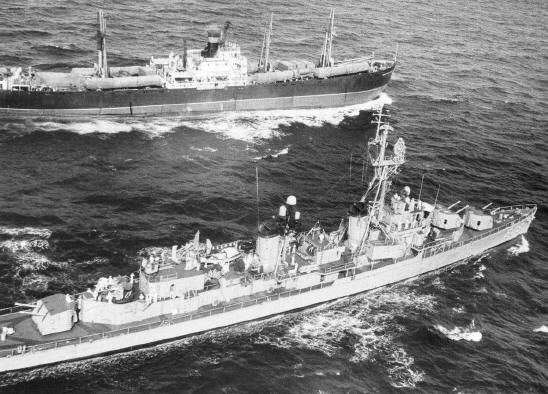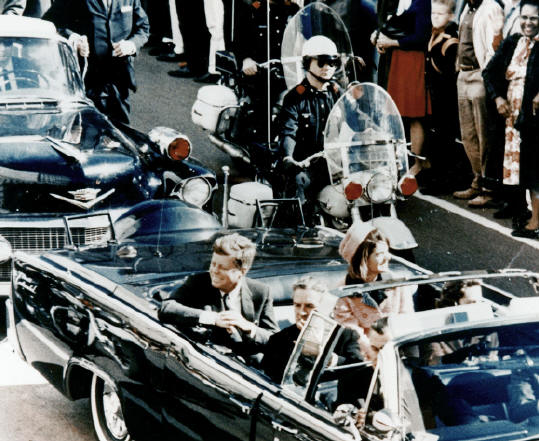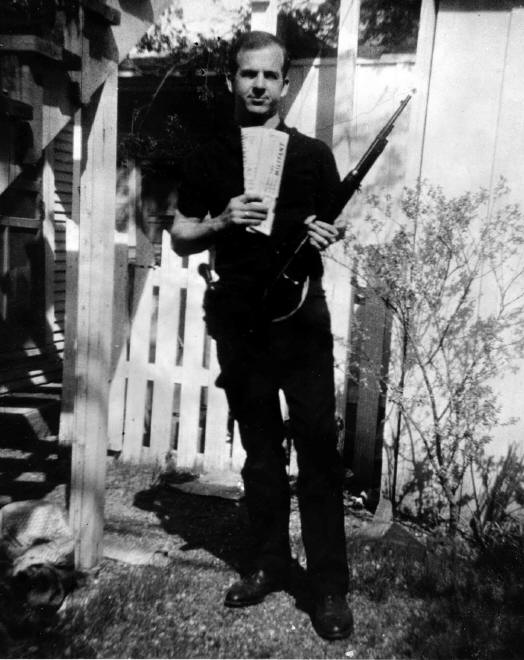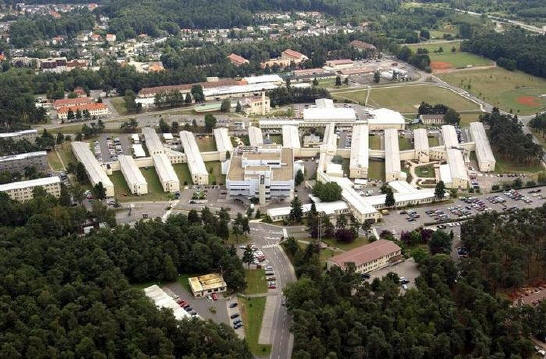|
Cold War Warriors Spies Like Us - Two!
Major Ted Streeter, USA Ret
In my last article, I recounted my adventures with Ursula, the young German woman whom I supposedly sheltered from the East German Secret Police and who, ultimately, got me kicked out of my safe house for allegedly running a whorehouse. A gripping tale of intrigue set in Cold War Germany. Before moving on to the
more serious side of HUMINT (human intelligence), I'd like to recall another incident that would probably cause James Bond to renounce his 007 badge. Let us call it - Spies Like Us – Two.
Anyone who was around at the time will recall not only the assassination of president John Fitzgerald Kennedy on November 23, 1963, in Dallas, TX, but will tell you exactly where they were and what they were doing on that date. I was stationed then with an army a U.S. Army intelligence unit in Kaiserslautern, German Federal Republic (West
Germany, at the time). A bunch of us were at a friend’s house for pizza and beer when the call came in from the unit informing us of the JFK assassination and ordering us to report immediately for duty. US forces in Europe were place on a higher alert status under the assumption that the assassination could be the opening move in a Warsaw Pact invasion of western Europe.
Nobody knew what was going on.
The picture was confusing. You will remember that JFK was in office in April 1961, during the failed invasion of Cuba at the Bay of Pigs, by Cuban exiles, supported by the CIA. Cuba, under the dictatorship of Fidel Castro, subsequently began to drift into the Soviet orbit until it became a gem in the Soviet crown, a place in the western
hemisphere from which the Soviets could launch the Marxist revolutionary doctrine into Latin American countries. Eighteen months later, in October 1962, the Soviets introduced Intermediate Range Ballistic Missiles (IRBM) into Cuba - nuclear armed missiles with a range to that could reach over half of the United States. As a person who has also worked in that field, I can
state that Imagery (Photo) Interpretation came of age during the Cuban Missile Crisis.
One of the more useful tools in photo interpretation is pattern analysis, i.e., how things are laid out. As an example, if you take an aerial photo of a vehicle depot full of trucks, say, you can tell by analysis whether the depot is civilian or military. If civilian, the vehicles will be generally randomly parked, in no particular order or
pattern. If military, however, they will all be aligned, sorted by category, etc. The same is true of weapons - in that different weapons are laid out according to a pattern particular to that weapon. So, when a routine photo reconnaissance flight detected a weapon system laid out in a star shaped pattern, we immediately knew that we had found a Soviet SA-6 Air Defense
missile site. The command center was in the center of the star, with the missile batteries at each point. The question then became what the SA-6 system was defending. It didn't take a great deal of further investigation to spot the warhead storage bunkers and assembly sheds, characteristic of an IRBM site.

An American warship escorting a Soviet tanker carrying missiles out of Cuba
The Soviets had been importing this equipment into Cuba by ship, with much of it being stored on deck, visible, packed in crates, a practice that spawned the Cold War photo interpretation science of "crateology". Again, by example, in the civilian world, certain types of gases are stored in unique containers. One can tell from the size and
shape of a container whether it contains liquid natural gas, hydrogen, etc. Similarly, by measuring the dimensions of a crate, noting its shape, etc., one can pretty well guess what's in it.
Armed with the this evidence, Kennedy, in October 1962, issued the ultimatum to the Soviets to remove the missiles from Cuba. For the next ten days the world stood on the precipice of nuclear war as the two sides stared at one another until a "face saving" bargain was struck. The Soviets removed their missiles from Cuba in exchange for which
the US dismantled and removed some aged ICBMs from Turkey and promised not to invade Cuba. The US also imposed an embargo on Cuba which lasts until this day.
Although the immediate crisis was resolved, there now existed, for all practical purposes, a state of war between Cuba and the US. Cuban exile groups, based in Florida and reportedly trained by the CIA, conducted continual raids on Cuba. Several alleged CIA-sponsored assassination attempts on Castro, (including an apocryphal famous "exploding
cigar"), were reported. And, undoubtedly the Cubans retaliated against Kennedy, although to my knowledge, no attempts were publicly reported. Kennedy also continued his hard line approach against the Soviets by, among other things, increasing the US commitment to South Vietnam, then under attack by the Communist north.

Moments before the assassination of President Kennedy
The assassination immediately produced a state of confusion as to who initiated the deed. Was it the Castro Cubans? That seemed the obvious choice. Was it the exiled Cubans who resented Kennedy's promise not to invade the island and free their homeland ? The Soviets ? The Mafia, which had lost millions of dollars in income generated by its
casinos and other interests in Havana through Kennedy's refusal to compromise with Castro? Was it a far right-wing military-industrial plot which stood to lose untold profits should Kennedy do as he was reported to be contemplating, i.e., severely limiting US support to the South Vietnamese.

Lee Harvey Oswald
In the end, as we know, the Warren Commission arrived at an absurdly simple conclusion: That Lee Harvey Oswald had, on his own, purchased a mail order rifle, for which he paid $13, and positioned himself in the window of the Texas School Book Depository building from which he shot the president. Not many people believed that. Conspiracy
theories abounded and exist to this day. In my personal opinion, I also don't believe the Warren Commission. Oswald may have pulled the trigger alone, but I believe he was influenced by other forces to do so. I have no proof other than circumstantial evidence, so I'll leave it at that. My theory is one of many and would fill a substantial amount of space.
All of the foregoing serves to bring us back to that historic afternoon in November, 1963 - in Kaiserslautern, West Germany. Since no one knew what was happening, anything was possible. And, so we were tasked by our headquarters to immediately follow up on any leads and talk to any person who claimed knowledge of the assassination. Now, these
were the days before communications satellites, twitter, email, instant messaging or any other form of communication that we now take for granted, so the possibilities were remote at best that anyone would come forward.

Landstuhl Army Medical Center, Germany
You can imagine our surprise when we received a call from Landstuhl Army Medical Center, located not far from Kaiserslautern, informing us that someone out there had prior knowledge of the assassination. So, a buddy and I jumped into the car and went to interview this person. When we arrived we learned that the individual in question was a
psychiatric patient. This didn't bode well. But, sworn to duty as we were, we conducted the interview only to learn that the person claimed to be able to divine the future by reading three comic strips – Li'l Abner, Pogo, and Mary Worth, and that it was by digesting the contents of these three strips that he could foretell the assassination of President Kennedy. Well, what do
you do? You follow orders. We had been instructed to report anything, and so we wrote up our report and submitted it up the line.
Somewhere in the bowels of US intelligence archives, bearing my signature, lies a report describing how a psychiatric patient in West Germany foretold the assassination of a president by deciphering hidden messages in comic strips. Who knows? It's probably as good as many of the other reports in that stack.
In my next and final article I'll turn to the more serious side of human intelligence to discuss the importance of personal vulnerabilities and the patience required to exploit them. Stay tuned for Spies Like Us – Three.
Ted Streeter is a retired U.S. Army Major with 22 years service and an additional 13 years service with the federal government, all in the field of intelligence and national security. He retired from the Gettysburg Borough Council on December 31, 2011, after 14 years service: seven as Council President.
Read other articles by Major Ted Streeter
Read other Cold War Warrior
Articles
|